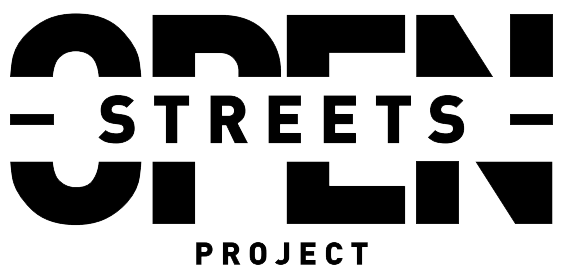What are the benefits of having Open Streets in my city?
Open Streets programs provide a multitude of benefits to their host city. The provide communities with accessible, free recreation, leading to improve public health. They are exercises in social integration, connecting neighbourhoods and allowing all residents to meet in the street as equals. Local businesses are provided the opportunity to showcase their wares to new potential customers, without the outside vendors that often accompany street festivals and events. Open Streets programs offer communities the opportunity to experience their city streets in whole new ways, encouraging greater civic participation and building support for the provision of broader transportation choices.
What makes Open Streets different from other street closure events like races, parades, or food festivals?
There are a number of ways in which Open Streets are different from other street closure events. Open Streets is a frequently occurring program encouraging physical activity, not a one-off event. They are about exploring your city in a new and fun way, highlighting existing brick and mortar businesses and civic assets, like museums and galleries and parks. Most importantly, Open Streets are entirely free and accessible. There are no user fees or entrance charges. No start lines or finish lines. Participants can enter and exit the route wherever and whenever they wish. You don’t need to be a high-performing athlete to participate, and you don’t need to be able to afford those $100 yoga pants either. Open Streets programs are for anyone and everyone.
Will Open Streets cause traffic congestion?
A common concern is that Open Streets programs will cause traffic chaos, leading to the carpocalypse or carmageddon (someone call Bruce Willis!). Open Streets organizers are often very interested in just the opposite, looking for solutions to alleviate traffic congestion. We know that cities see fewer traffic problems if residents are able to safely walk, cycle, and take public transit in their daily lives. Open Streets programs are a great way of introducing people to these forms of transportation. Additionally, Open Streets programs most often occur on Sunday mornings, as that’s when traffic volumes tend to be at their lowest. Open Streets programs, unlike most other street events, ‘soft close’ major intersections, allowing vehicular traffic to pass through the route. For more information on how the soft close intersections work, click here!
What streets are best for an Open Streets route?
We recommend using your main street(s) for your Open Streets program. Think of the Park Avenue of your city. That’s a street that is already vibrant, attractive, with established businesses. It’s a destination. You’ll have a much easier time drawing people to your program if you’re providing them with the chance to experience an existing special place in a whole new exciting way. From that spine, you can connect to those easier street close, knitting together various neighbourhoods and communities.
There are programs in some cities that operate on highways or industrial roads with very little local business or attractions. Unless those are extensions of a larger route that includes that iconic spine, they often lead to programs that are less than successful. They tend to attract participants that are very fit and are already incorporating physical activity into their daily lives. To reach as broad and diverse a population as possible, make sure you’ve got your iconic spine and branch out from there.
What impact does Open Streets have on business?
Another concern Open Streets organizers often hear is that Open Streets will harm small scale business. In reality, Open Streets programs are often a boon to local brick and mortar businesses. One of the defining features of Open Streets programs is that they do not feature outside vending. Unlike many street events, no one will be putting up a tent or parking a food truck in front of an existing business. Open Streets provides the opportunities for local businesses to showcase their neighbourhood without outside interference.
A number of studies conducted in several American cities have captured the economic benefits available to businesses along Open Streets routes. For more information, take a look at our Open Streets and Local Economies Fact Sheet
Why is a long route so important to an Open Streets program?
Having a long route (minimum 3 miles in a smaller town and 6 miles in a larger one) is a critical factor in a successful Open Streets program. Whatever the main goal of your program is, (physical activity, social integration, economic development etc.) you aren’t going to be achieving them if it only takes participants five minutes to get from one end to the other. At a minimum, your route should take 20 minutes for a participant to bike the entire length. The longer the route, the most neighbourhoods, attractions, businesses and residents you can connect to, and the greater the impacts your program will have.
Does this mean some portions of the route may be quieter than others? Yes it does, and that’s ok! Those less populated portions of the route are the places where more intimate conversations and connections take place. They are where the most vulnerable program participants, the very young, very old, and those with mobility devices, can take up space safely and comfortably without fear of larger crowds and faster moving participants.
How many times a year should Open Streets happen?
We strongly encourage programs to start with more than one date, even in the first year. Open Streets programs are all about encouraging regular physical activity. Regular is the key word in that sentence. It’s difficult to foster a culture of regular physical activity with a one-off event. An Open Streets program that occurs multiple times does a far better job of instilling a routine of physical activity and healthy living. Costs for the organizing body also get lower, the more frequently the program occurs and attendance goes up as the word of mouth gets around.
The ultimate goal is to create a fantastic Open Streets initiative that achieves all the objectives you have set out for program. The best way to do that is to have many program dates throughout the year (it is no surprise that the world’s most impactful Open Streets programs occur every Sunday of the year). If you start your first year with only one date, you are going to have a much harder time making the case for scaling up and adding more dates.
Will people show up to our Open Streets?
We’ve all been there. It’s 6:00am on the day of your first program, it’s been months, or in some cases years, of hard work to get this moment, and you can’t shake that feeling that no one will show up. Rest easy! We’ve seen these programs succeed in hundreds of cities across the Americas and around the world. People are hungry for the opportunity to access their streets in a safe way. They want to run, walk, bike and play!
The most important thing you can do is to get the word out. Tell everyone to come on out! Plan your route through high density neighbourhoods that have access to transit nodes so people can easily access the program. Check out our Planning Your Route and Marketing resources to get more tips and tools on planning and advertising your route.
Can we use parks or sidewalks for an Open Streets?
This question is a really important one. The premise is correct, we do already have open parks and sidewalks. Unfortunately, despite these amenities, we have rising rates of physical inactivity and obesity across the U.S. and the world. Open Streets programs give people something our existing parks and sidewalks can’t. They are an exciting avenue to get people out their front doors and active. Being in the middle of your street is a special experience. There’s a thrill of the forbidden that comes from the novelty of the experience. That is what sets Open Streets programs apart from parks and sidewalks. It’s what draws people out and gets them participating in physical activity. People want to access their streets in a safe manner, to walk, run, bike and play.
If someone is participating in an Open Streets program on a Sunday, they are more likely to walk or bike to store on Tuesday. That’s the real behaviour change we need to combat rising rates of obesity and lifestyle related illnesses. Open Streets programs are a proven method of inspiring and instilling those necessary changes to our mobility-related behaviours. We don’t see those same types of impacts from our parks and sidewalks.
Is an Open Streets program an expensive way to get people to participate in physical activity?
Contrary to what you might think, low-cost Open Streets programs can often have a larger impact than high-cost ones. A lean and affordable program is going to be much easier to scale up, expand and sustain. The larger the program, the greater the impacts.
Open Streets programs are much more affordable than building new physical recreation facilities like a park or a rec center. Open Streets reuses an existing asset, our streets, which we’ve already invested billions of dollars in. Open Streets takes that asset and repurposes it on Sunday mornings for a new audience, providing access to physical activity for cents on the dollar, when compared to the costs of building an entirely new piece of infrastructure.



